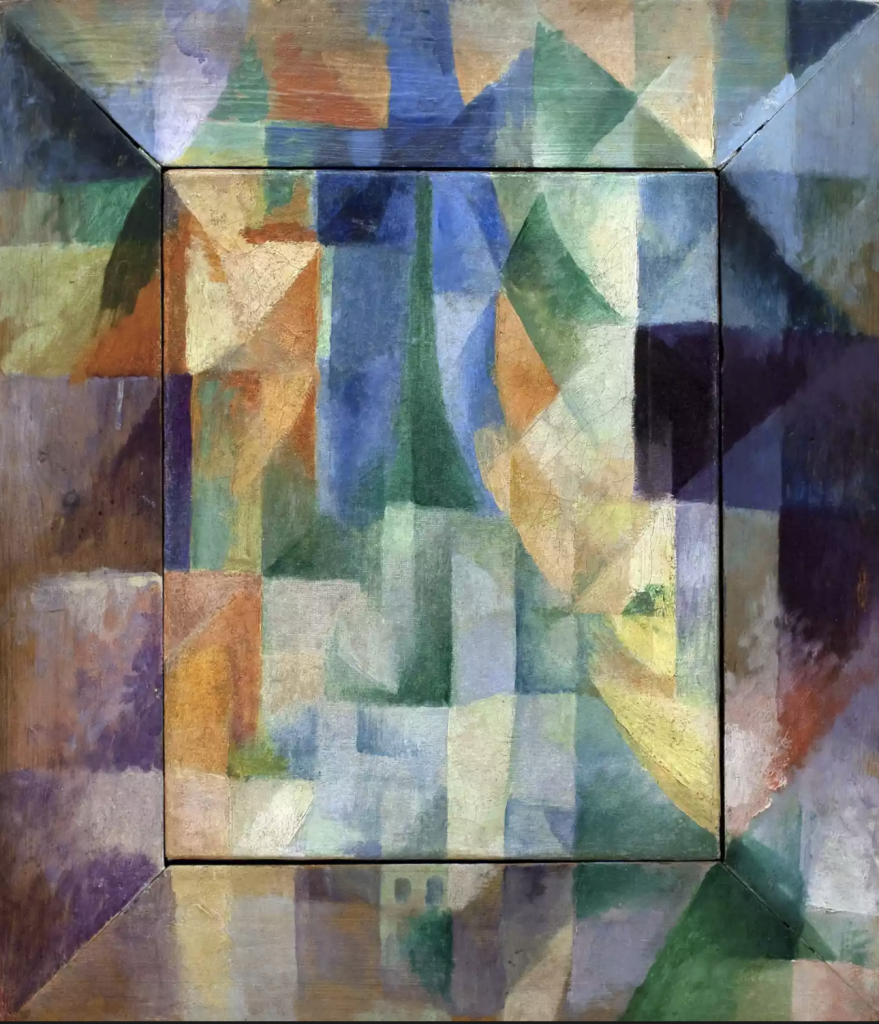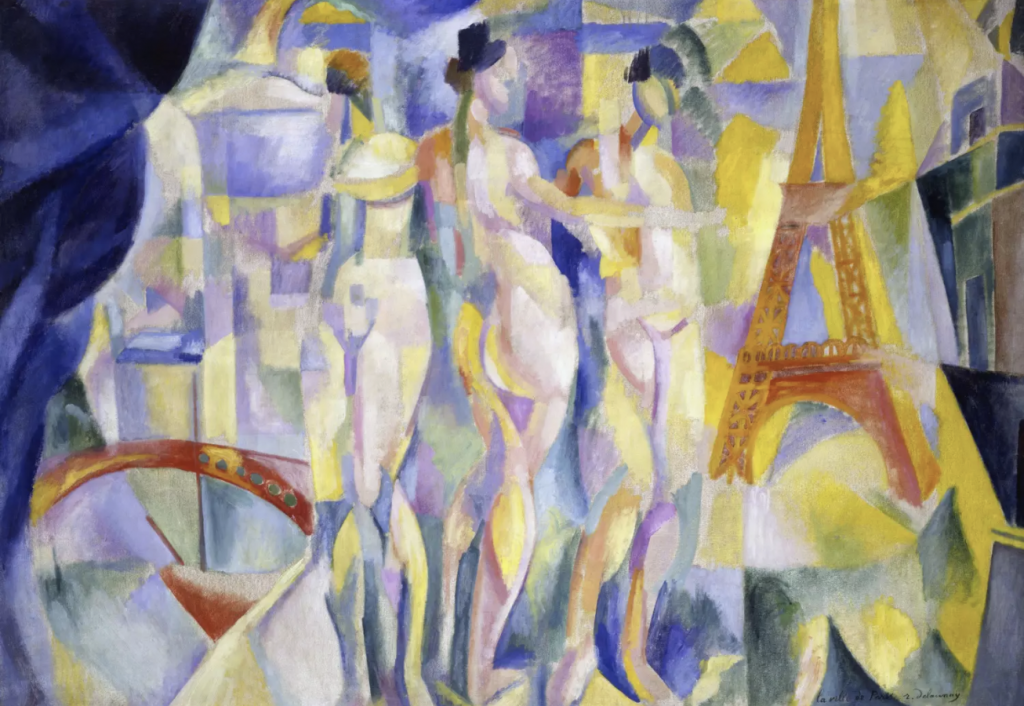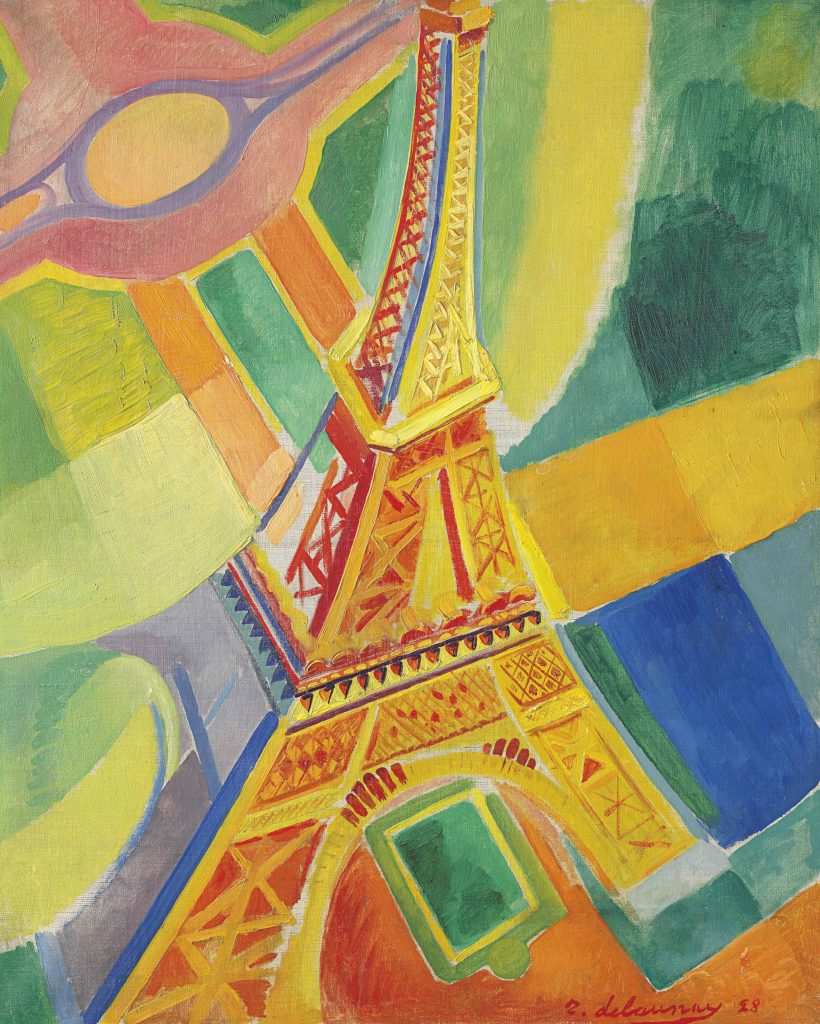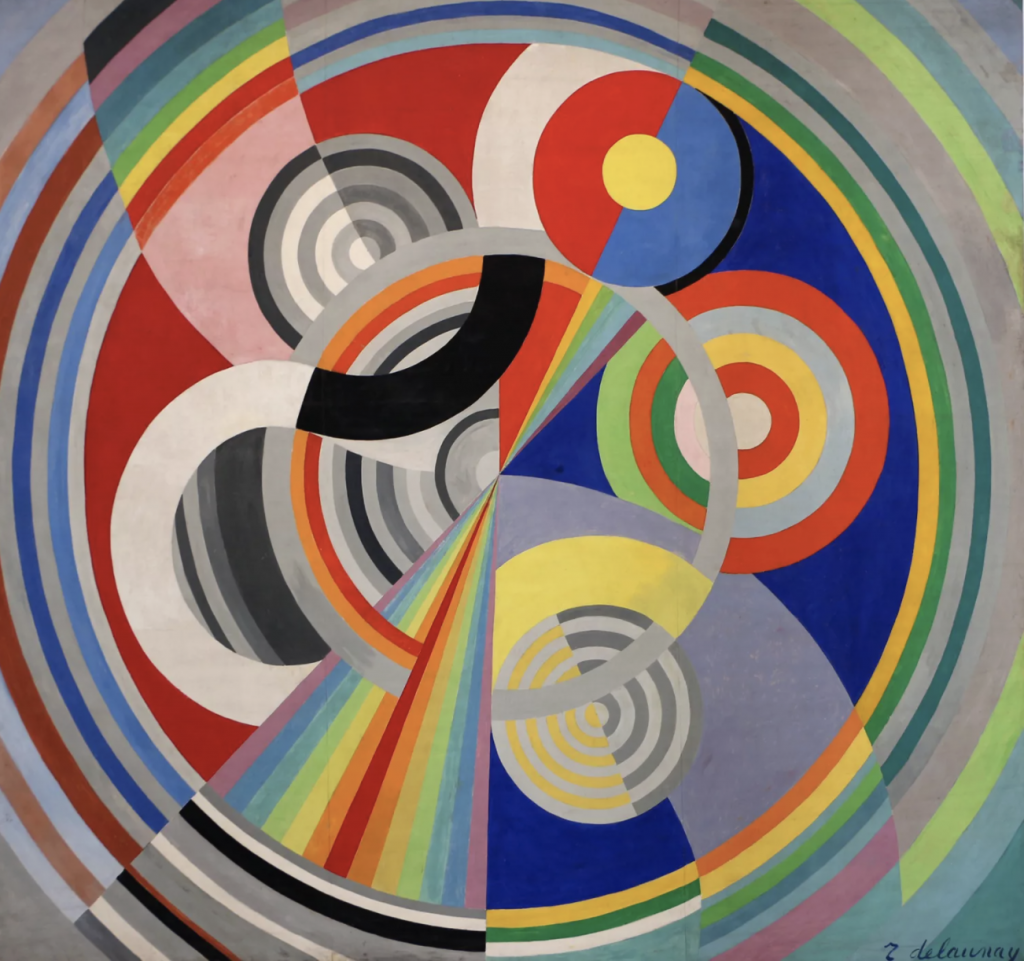Robert Delaunay (1885-1941 France)
Leader of Orphic Cubism Movement (Orphism)
Robert Delauney was a French Cubist artist best known for his repertoire of colourful geometric paintings. His paintings evoke a sense of movement with its use of contrasting colours, lines, and shapes. He was a leader, alongside his wife Sonia, of the Orphic Cubism art movement which was originally named as such by a critic in reference to the mythical Greek musician and poet Orpheus—to emphasize the lyricism and musicality in Delaunay’s works. He exhibited at the Salon des Indépendants in 1904 in his late teens and it solidified his position amongst the avant-garde artists in France early on. We was also invited to exhibit at first Der Blaue Reiter exhibition in 1911 by Wassily Kadinsky.

Simultaneous Windows on the City (1912) 
La Ville de Paris (1911)
At the outbreak of WWI, he and his wife fled to Spain and later Portugal, where the warm, clear light of northern Portugal would be a source of colour inspiration for them both (as seen in his Portuguese Woman painting). In contrast to the two paintings above created in Paris, there is a clear shift in colour to a much brighter palette. It’s fascinating to see how a change in scenery can impact an artist’s work and continue on to influence their work as they adopt it as a part of their new style. The Eiffel Tower shown below was painted n Paris post-Portugal and yet it retains the luminosity of the palette he used from those days.

Delaunay’s notable series include his Windows, Eiffel Towers, Circular Forms, and Rhythms. His work trended towards becoming more and more abstract post war. I enjoy his use of contrasting colours and at first glance of his disc paintings and at first glance, it reminded me of a bolder version of some of Hilma af Klint’s work.

Tour Eiffel (1926) 
Rhythm Nº 1 (1938)
References
https://www.nga.gov/collection/art-object-page.52397.html/

One reply on “Cubism, Dadaism, & Surrealism”
Tiffany,
Great work on Edward Hopper! Good solid information through research. Nice clear images and some lesser known paintings. Excellent delivery and you kept it interesting.
10/10